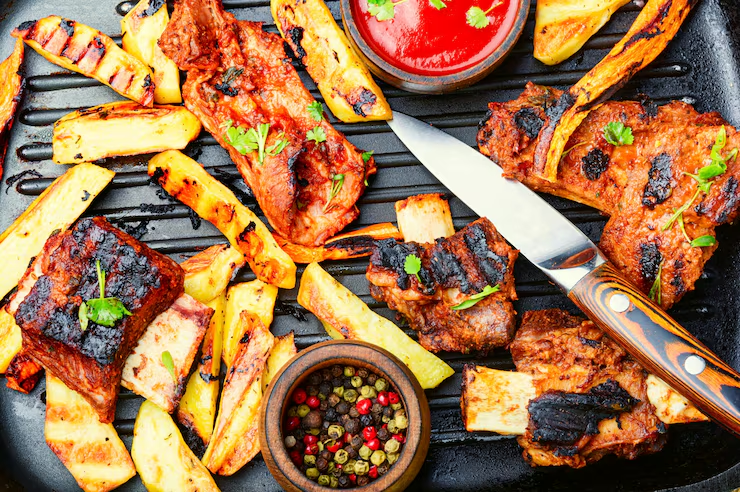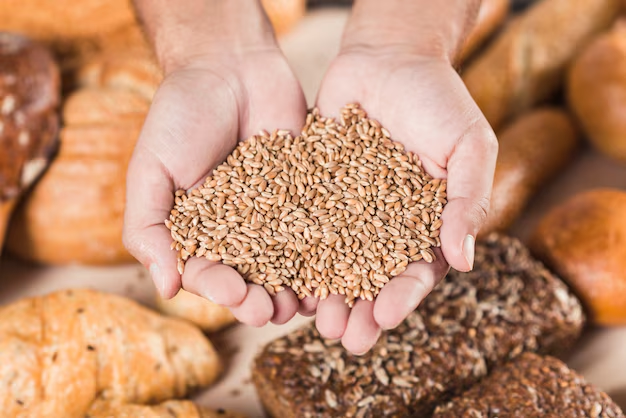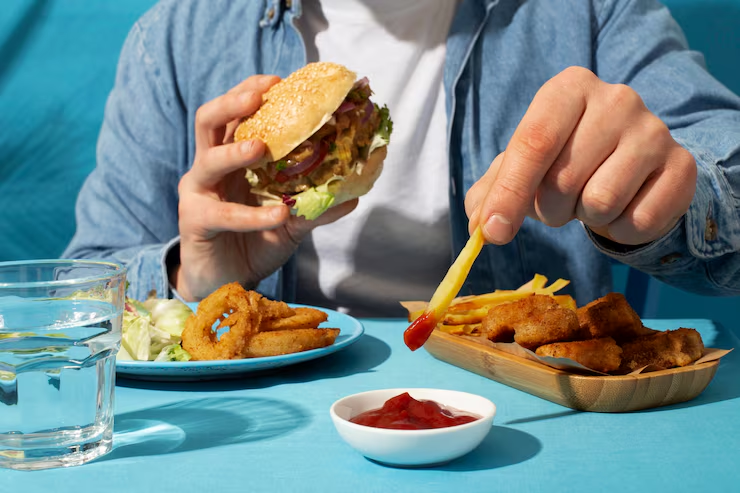Many people assume that fast food and weight loss are mutually exclusive, but with the right strategies, you can enjoy your favorite meals while still working toward your weight-loss goals. Fast food is often convenient, tasty, and accessible, making it a staple in modern life. However, understanding how to make smarter choices allows you to maintain a healthy calorie balance without feeling deprived. The key lies in moderation, portion control, and strategic menu selection.
The concept of fast food and weight loss emphasizes mindful eating and smarter substitutions. For example, choosing grilled items over fried, swapping sugary drinks for water or unsweetened beverages, and adding more vegetables to your meal can significantly reduce calorie intake. By focusing on nutrient density rather than just taste, you can create meals that satisfy your cravings while still supporting fat loss.
In addition, incorporating the fast food and weight loss mindset means planning ahead. Knowing which restaurants offer healthier options, checking nutrition labels, and adjusting portion sizes are practical ways to enjoy your favorite foods without compromising your health. This approach not only makes weight loss more achievable but also sustainable over the long term, allowing you to maintain a healthy relationship with food. 🌟

What is the Fast Food and Weight Loss Approach?
The fast food and weight loss approach focuses on making mindful choices while still enjoying convenient meals. By selecting options that are lower in calories, fat, and sugar, you can satisfy cravings without sabotaging your diet. Incorporating more fiber and protein into meals helps you feel fuller for longer, reducing the urge to overeat or snack on unhealthy foods.
This strategy allows fast food to fit into a balanced lifestyle. Choosing grilled items, lean proteins, and nutrient-rich sides ensures that your meals remain satisfying yet aligned with your daily calorie goals. 🍔 Mindful eating and portion control are key to success.
A key aspect of the fast food and weight loss approach is understanding portion sizes and meal composition. Instead of eating large combo meals with high-calorie drinks and sides, focus on smaller portions and healthier alternatives. Grilled sandwiches, salads with lean proteins, and wraps with extra vegetables are excellent examples of meals that satisfy hunger while keeping calories in check.
This approach also emphasizes awareness of hidden calories, such as sauces, dressings, and fried sides. By opting for lighter sauces or skipping extras like cheese and mayonnaise, you can maintain a calorie deficit without sacrificing flavor. The fast food and weight loss method encourages moderation, helping you enjoy your favorite foods in a way that aligns with your health goals.
Why Choose the Fast Food and Weight Loss Strategy?
Adopting the fast food and weight loss strategy offers multiple benefits. Firstly, it allows flexibility, which is essential for long-term adherence to any diet. Rather than eliminating fast food entirely, you learn to make smart choices that satisfy cravings while supporting fat loss. 🌱
Secondly, the strategy promotes mindful eating. Paying attention to portion sizes, ingredients, and preparation methods helps you stay in control of your calorie intake. It also encourages the addition of nutrient-rich foods like vegetables, lean proteins, and whole grains, which support overall health and digestion.
Lastly, the fast food and weight loss approach reduces feelings of deprivation. When people restrict themselves completely, they are more likely to overeat or binge later. By incorporating smarter fast food choices, you can enjoy your meals guilt-free while staying on track with your weight-loss goals. This approach fosters a sustainable, balanced lifestyle that can be maintained for years.
Smart Fast Food and Weight Loss Tips 🍔
Choose Grilled Over Fried

Opting for grilled items instead of fried is one of the most effective strategies for fast food and weight loss. Grilled chicken, fish, or vegetables retain their flavor while significantly reducing unhealthy fats and calories. Unlike fried foods, which are cooked in large amounts of oil, grilling preserves nutrients and avoids added grease. This simple swap can dramatically lower daily calorie intake and support long-term weight management. 🍗
Grilled foods also provide high-quality protein, which is essential for building and maintaining lean muscle. Lean muscle not only improves body composition but also boosts metabolism, helping your body burn more calories even at rest. Choosing grilled options ensures that you are getting nutrient-dense meals that satisfy hunger without the guilt associated with fried foods.
Incorporating grilled items into your fast food and weight loss routine is simple. Many fast-food chains offer grilled sandwiches, wraps, or salads with grilled protein. By consistently choosing grilled over fried, you can enjoy your favorite fast foods while staying on track with weight-loss goals.
Watch Portion Sizes
Portion control is a key principle in the fast food and weight loss approach. Large combo meals are often loaded with extra calories from oversized fries, sugary drinks, and multiple patties, which can quickly exceed your daily calorie needs. By choosing smaller portions, you can enjoy fast food without sabotaging your weight-loss efforts. 🍟
Smaller portions help regulate hunger and prevent overeating. Eating slowly and being mindful of serving sizes allows your brain to register fullness, reducing the likelihood of consuming extra calories. Even slight adjustments, like choosing a junior burger or a small sandwich, can have a significant impact over time.
Practicing portion control also encourages healthier meal planning. Pairing a smaller main dish with a side salad or fruit cup increases fiber and nutrient intake without extra calories. Watching portion sizes is a simple yet effective habit for anyone following the fast food and weight loss strategy.
Load Up on Veggies
Adding extra vegetables to your fast food meals is an excellent way to support fast food and weight loss. Lettuce, tomatoes, cucumbers, onions, and peppers are low in calories but high in fiber and essential nutrients. They help fill your plate, increase satiety, and reduce the temptation to overeat high-calorie items. 🥗
Vegetables provide bulk without excessive calories, which is crucial for maintaining a calorie deficit. The fiber content slows digestion, stabilizes blood sugar levels, and promotes a feeling of fullness, helping you avoid unnecessary snacking between meals. Additionally, the vitamins and antioxidants in vegetables boost overall health, making your meals more nutrient-dense.
Incorporating more veggies into your fast food meals is easy. Request extra lettuce and tomato on sandwiches, add a side salad, or include vegetable toppings on wraps and bowls. This simple change enhances both flavor and nutrition, supporting your fast food and weight loss goals.
Skip Sugary Drinks
Sugary drinks like soda, sweetened teas, and milkshakes add unnecessary calories that can undermine fast food and weight loss efforts. A single large soda can contain over 200 calories and a high dose of sugar, contributing to weight gain if consumed regularly. Replacing sugary beverages with water, iced tea, or sparkling water helps control calorie intake and supports fat loss. 💧
Cutting out sugary drinks also improves overall health. Excess sugar contributes to blood sugar spikes, increased cravings, and risk of chronic diseases such as type 2 diabetes. By opting for zero-calorie beverages, you maintain hydration while avoiding the negative metabolic effects of added sugar.
Making this small swap is simple yet impactful. Drinking water or unsweetened tea alongside your meal can help you stay full and satisfied. Consistently skipping sugary drinks is a crucial habit in the fast food and weight loss approach.
Go Light on Sauces
Sauces, dressings, and condiments can significantly increase the calorie content of fast food meals. Mayo, creamy dressings, and sugary sauces add hidden fats and sugars, making it harder to stick to your fast food and weight loss plan. Asking for sauces on the side allows you to control how much you consume. 🥫
Even a small drizzle of sauce can add dozens of calories. Using sauces sparingly or choosing lighter options like mustard, salsa, or vinegar-based dressings keeps flavor without sabotaging your calorie goals. This strategy also encourages mindfulness, as you become more aware of the extras that contribute to overall meal calories.
Incorporating this habit consistently helps you reduce unnecessary fat and sugar intake. By controlling sauces and dressings, your fast food meals remain tasty and satisfying while aligning with your fast food and weight loss objectives.
Choose Whole Grains

When available, choosing whole-grain buns, wraps, or tortillas is a smart fast food and weight loss strategy. Whole grains provide more fiber and nutrients than refined grains, helping you feel full longer and improving digestion. Brown rice, whole-wheat bread, and multi-grain wraps can turn a typical fast food meal into a more balanced option. 🌾
Fiber from whole grains slows digestion, stabilizes blood sugar levels, and reduces cravings. This makes it easier to maintain a calorie deficit without feeling deprived. Additionally, whole grains provide essential vitamins and minerals that support overall health and metabolic function.
Simple substitutions, like swapping a white bun for a whole-grain alternative or choosing brown rice bowls instead of fried rice, enhance nutrition without compromising taste. Including whole grains in your meals strengthens the fast food and weight loss approach while keeping meals satisfying.
Select Lean Proteins
Choosing lean proteins is essential for anyone practicing fast food and weight loss. Grilled chicken, turkey, fish, and plant-based proteins like tofu or beans provide essential amino acids without the excess fat found in fried or processed meats. Lean proteins help maintain muscle mass while promoting fat loss. 🍗
Protein-rich meals also increase satiety, helping you stay full longer and avoid unnecessary snacking. They require more energy to digest, slightly boosting metabolism and supporting overall calorie burn. By including lean proteins in your meals, you ensure that your diet is balanced and sustainable.
Incorporating lean proteins at fast food restaurants is straightforward. Select grilled options, protein bowls, or bean-based items instead of fried meats. Consistently choosing lean proteins strengthens the fast food and weight loss strategy, making it easier to meet your health goals.
Limit Cheese and Extras
Cheese, bacon, and other extras can add hundreds of calories and saturated fat to fast food meals, which can hinder fast food and weight loss efforts. Skipping or limiting these toppings reduces calorie intake while still allowing you to enjoy your favorite dishes. 🧀
By removing high-calorie extras, you can maintain flavor while creating a healthier, lighter meal. Cheese and processed meats are often dense in calories and low in nutrients, so limiting them ensures your meals are more nutrient-focused and aligned with weight-loss goals.
This simple change can be applied at almost every fast food restaurant. Ask for no cheese or replace bacon with extra vegetables to boost fiber and volume. Limiting extras is a small adjustment with a big impact on your fast food and weight loss success.
Try Salads with Lean Protein
Salads with grilled chicken, beans, or tofu are excellent fast food and weight loss options. They provide high fiber and protein while keeping calories low, making them filling and nutrient-dense. Adding a variety of vegetables enhances flavor, texture, and micronutrient content. 🥗
Fiber from vegetables helps regulate digestion and blood sugar, while lean protein supports muscle maintenance and satiety. Salads can be a complete meal when paired with healthy toppings like avocado, seeds, or a light dressing, making them an excellent alternative to fried or carb-heavy options.
Many fast food chains now offer customizable salads. By choosing a protein-rich base and controlling dressing portions, you create a satisfying, low-calorie meal that supports the fast food and weight loss approach. This habit ensures you enjoy convenient meals without compromising your health goals.
Healthy Snack Swaps
One of the simplest strategies for fast food and weight loss is swapping high-calorie sides like fries for healthier alternatives. Fries are often deep-fried and loaded with salt and fat, contributing unnecessary calories to your meal. Choosing fruit cups, side salads, or yogurt instead not only reduces calorie intake but also adds essential nutrients like fiber, vitamins, and antioxidants. 🍓
Healthy snack swaps help improve satiety and prevent overeating later in the day. Fruits provide natural sweetness, which satisfies cravings for sugary foods without the excess sugar found in milkshakes or desserts. Side salads are high in fiber and water content, filling your stomach and promoting digestion. Yogurt adds protein and probiotics, supporting gut health while keeping your meal balanced and nutrient-rich.
Incorporating these swaps into your fast food and weight loss routine is practical and sustainable. By consistently choosing healthier sides over traditional fries, you maintain flavor and satisfaction while making smart calorie-conscious choices that support long-term weight management. 🥗
Plan Ahead – Check the menu online for healthier options before visiting the restaurant.
Mindful Eating – Eat slowly and savor your food to prevent overeating.
Avoid Late-Night Fast Food – Eating late can lead to excess calorie intake; choose meals earlier in the day.
Balance With Home Meals – Pair fast food meals with lighter, nutrient-rich home meals to maintain overall balance.
Keep a food journal or use apps to monitor calorie intake and stay on track.
Conclusion

The fast food and weight loss strategy proves that you don’t have to completely give up your favorite foods to achieve your health goals. By making smarter choices, practicing portion control, and being mindful of ingredients, you can enjoy meals that satisfy cravings without sabotaging weight loss efforts.
Flexibility is one of the key benefits of the fast food and weight loss approach. Incorporating fast food into your diet in a balanced way reduces feelings of deprivation, which often leads to long-term adherence. By focusing on nutrient-rich options, such as grilled proteins, vegetables, and whole grains, you can maintain a sustainable, enjoyable eating pattern.
Ultimately, the fast food and weight loss mindset encourages balance and moderation. Pairing smarter fast food choices with home-cooked meals, regular physical activity, and mindful eating ensures consistent progress toward weight-loss goals. With the right strategies, fast food can become part of a healthy, enjoyable lifestyle that supports long-term fat loss and overall wellness. 🌟
FAQs
Q1: Can I still lose weight if I eat fast food occasionally?
Yes, occasional fast food can fit into a weight-loss plan if consumed in moderation. The fast food and weight loss strategy focuses on portion control, smart substitutions, and mindful eating to maintain a calorie deficit while enjoying your favorite meals.
Q2: What are the best fast food choices for weight loss?
Opt for grilled proteins, salads with lean meats, wraps with vegetables, and side options like fruit or yogurt. Avoid fried items, sugary drinks, and high-calorie extras to align with the fast food and weight loss approach.
Q3: How can I make fast food healthier at restaurants?
Ask for sauces and dressings on the side, choose grilled instead of fried, skip cheese or mayo, and add extra vegetables. These simple modifications support the fast food and weight loss strategy while maintaining taste.
Q4: Is it possible to eat fast food daily and still lose weight?
Yes, with careful choices and portion control. Incorporate salads, grilled items, and low-calorie options. Pair fast food with active lifestyle habits to follow the fast food and weight loss approach effectively.
Q5: How do I avoid overeating fast food?
Practice mindful eating, choose smaller portions, and plan meals ahead. Avoid sugary drinks and high-calorie extras. The fast food and weight loss strategy emphasizes awareness, moderation, and healthier swaps to prevent overconsumption.

